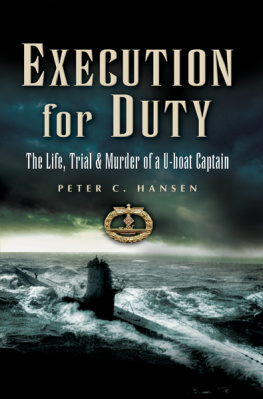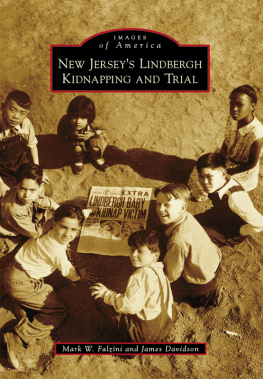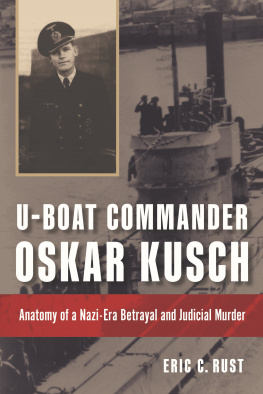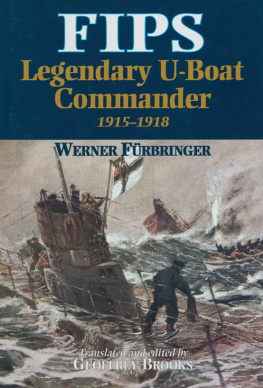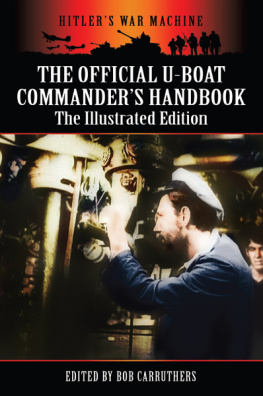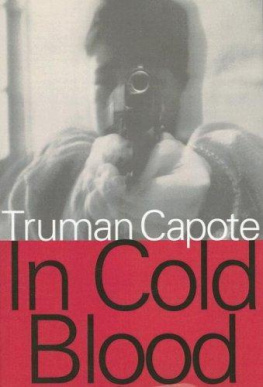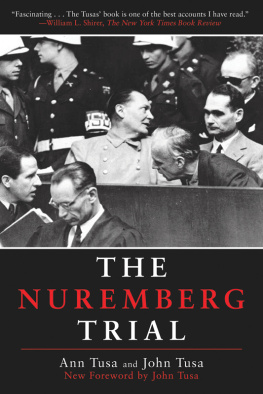
First published in Great Britain in 2005 by
Pen & Sword Maritime
an imprint of
Pen & Sword Books Ltd
Copyright Peter C. Hansen, 2005
ISBN 1 84415 322 3
PRINT ISBN: 9781844153220
ePub ISBN: 9781844682294
PRC ISBN: 9781844682300
The right of Peter C. Hansen to be identified as Author of this Work has been
asserted by him in accordance with the Copyright,
Designs and Patents Act 1988.
A CIP catalogue record for this book is
available from the British Library
All rights reserved. No part of this book may be reproduced or transmitted in any
form or by any means, electronic or mechanical including photocopying, recording
or by any information storage and retrieval system, without
permission from the Publisher in writing.
Typeset in Sabon by
Phoenix Typesetting, Auldgirth, Dumfriesshire
Printed and bound in England by
CPI UK
Pen & Sword Books Ltd incorporates the Imprints of Pen & Sword Aviation, Pen
& Sword Maritime, Pen & Sword Military, Wharncliffe Local History,
Pen & Sword Select, Pen & Sword Military Classics and Leo Cooper.
For a complete list of Pen & Sword titles please contact
PEN & SWORD BOOKS LIMITED
47 Church Street, Barnsley, South Yorkshire, S70 2AS, England
E-mail:
Website: www.pen-and-sword.co.uk
This book is dedicated to the memory of Vice-Admiral Lothar von Arnauld de la Priere, the most successful submarine commander of all times in any navy, who, during the First World War, on fifteen war patrols lasting thirty-six months, sank 196 ships, totalling 456,266 tons, and remained a gentleman.
His death in an air crash on 24 February 1941, near Le Bourget airport in Paris, was suspected as having been caused by sabotage. Erich Raeder ordered a full investigation by a professional team of naval investigators. But Hermann Gring successfully prevented this, instructing the Gestapo, whose first Head he had been, to make absolutely sure that there would be no naval examination of this crash.
They have sown the wind and
they shall reap the whirlwind!
Hosea 8:7
Foreword
During the early years of both world wars, speedy airplanes with long-range did not exist and reliable long-distance radio communications between ships at sea were not available. They could only use either signal flags or the semaphore type of signal lamps to do so, using abbreviated Morse code phrases.
Submarines proceeding to their respective operational areas, usually moved on the surface to save time and felt safe doing so. Submarine captains and U-boat commanders had developed a chivalrous attitude towards each other, based upon mutual professional respect, while facing quickly rising losses and sudden chances of awful death. Fast reaction torpedoes to kill other submarines had not yet been invented. Whenever submarines met unexpectedly at sea, generally in the darkness, a courtesy greeting system had soon developed, using a mixed language Morse code.
The Germans signaled the letters: G-M-Y, standing for: Gott Mit You, meaning: God (be) With You. The British responded with: M-Y-T, standing for: Mit You Too, meaning: With You Too, while passing each other. At times even waving their hats.
These unofficial greeting signals swiftly became known to submariners all over the world and in all navies and are still used customarily today. I have been greeted in this way verbally in many different places over the years by other submariners, as a member of a friendly international society.
Would it not be a step forward, if such a customary mutual approach became normal between all people who have common interests and traditions?
Peter Hansen 2005
Acknowledgements
In spite of existing regulations regarding secrecy matters, which some governments would like to retain for ever, many witnesses and confidential sources of information have related the facts of their personal experiences and discussed with me operations and occurrences in which they somehow became involved, usually not by their own choice. Most of them have talked only on condition that they could remain anonymous. The reader will understand that I am bound by such a promise.
But a few people have agreed to the use of their names, and I should like to thank them here for their invaluable information, their personal input and the important documents they provided. I am most grateful for their cooperation and assistance and fully appreciate their contributions to this book. Consequently, in deep gratitude for their help with this book, I thank Horst Frhlich, Hellmuth Kirchammer, Peter Marl and Herbert A. Werner.
Needless to say, all conclusions reached and any assessments made are entirely my own, as are any errors, incorrect assumptions, misunderstandings or specific interpretations of facts and documents.
Over the years there have been many friends, associates and mentors, who have strongly encouraged me on this long journey to ferret out the truth without shielding in any way the personal sensitivity of politicians or anybody else for that matter.
But fairness and thankfulness dictate that I must express my most sincere appreciation to Peter Padfield, author of numerous books in different areas from history to maritime matters. His always practical advice and many helpful suggestions based upon his extensive professional experience in the publishing field have benefited me greatly and enforced my persistence to stay firmly on course.
Michael L. Denneny I thank deeply for his candid, straightforward recommendations with respect to script structure, clarity and balance of text, which considerably improved this book.
Last, but not least, I have to thank Sandra Sandy Leisengang for her patience, equanimity and consideration in helping to get this script into the right shape and required computerized format, which would have been impossible without her.
Every individual mentioned and each person named in this book was a real person, and their actual names are used. Only a handful of men insisted that their names must not appear in print for personal reasons, which I was obliged to respect.
Peter C. Hansen
North Palm Beach, Florida
Historical Introduction
In order to be able to understand the events you will read about, some advance information is essential. Otherwise, the state of things in Germany and German-occupied Europe during the Second World War is almost incomprehensible to people who were fortunate enough to live elsewhere.
To make it easier for readers to follow matters and understand specific actions, particular decisions and operational occurrences, and especially to obviate lengthy footnotes, confusing cross-references, excessive technical details and inordinate statistics, it is at times necessary to explain beliefs and views prevalent during that period in history.
For many reasons there prevails in most political and military circles a strong tendency towards secrecy, not so much to fool the enemy or confuse particular opponents, but mainly to prevent reliable information and actual facts from reaching their own folk. To inform the people correctly is seen as dangerous by the politicians in charge. Often those in authority prefer to act and proceed on that old Roman motto, De mortuis nil, nisi bene (Do not speak ill of the dead).
However, I believe this approach is outdated and quite wrong. I think that this proverb needs to be modified to De mortuis nil, nisi VERE, as one ought to stick to the truth and talk about facts, even if they are rather unpleasant ones, whenever dead people are involved.
I believe strongly that the individual is important and that his or her life and personality must not be subjected to the uncontrolled powers of any state, which tends to disregard the individuals rights and interests. This is one of the main reasons why this book was written.
Next page
